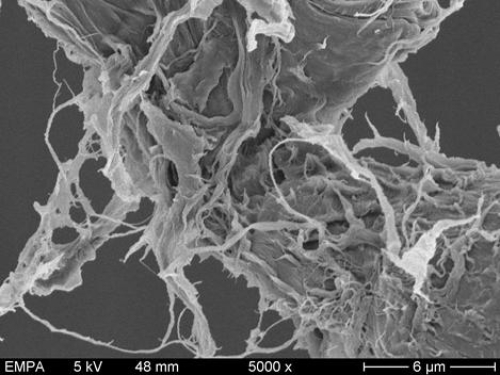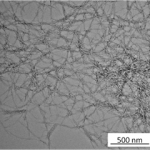American Process Inc. (Atlanta, GA) and Futuris Automotive (Melbourne, Australia) recently formed a partnership with researchers at Georgia Institute of Technology, Clark Atlanta University, Swinburne University of Technology, and the USDA’s Forest Products Laboratory to develop ultra-strong, lightweight automotive structural components reinforced with nanocellulose. Nanocellulose is a rapidly emerging high performance nanomaterial extracted from trees. The goal of the project is to replace heavy steel structures within cars, such as the seat frames, with advanced reinforced polymers that have cost parity with traditional materials. The nanocellulose composites promise to be an economical substitute for expensive light-weight carbon fiber composites currently used in some luxury automobiles such as BMW’s all-electric i3.
That’s good news for consumers and the environment. According to the U.S. Department of Energy (DOE), reducing a vehicle’s weight by just 10 percent can improve fuel economy by 6-8 percent. The DOE has established a target vehicle weight reduction of 50% by 2050. The agency states that the limiting factor in use of lightweight materials in vehicles has been availability of sufficient quantities at affordable cost.
That’s where American Process Inc. comes in. Their proprietary manufacturing process makes renewable, low carbon footprint nanocellulose, which has strengths equivalent to Kevlar® and prices similar to conventional polymers. American Process will begin commercial sales of nanocellulose by end of Q1 2015, when their demonstration plant comes online in Georgia.
According to American Process Inc.’s CEO Theodora Retsina, “This new eco-material can both substitute and enhance the performance of petroleum-based plastics in an environmentally friendly and market competitive way. Carbon fibers are extremely strong and light but expensive to produce and used only in the highest end applications like aerospace and luxury vehicles. Nanocellulose has even lower weight than carbon fibers and is just as strong. With our manufacturing breakthrough, nanocellulose is a fraction of the price of carbon fibers. Cellulose is the most abundant natural organic material on Earth and it’s renewable and compostable. We didn’t invent nanocellulose, we made it less expensive, more thermally stable at high temperatures, and gave it functionality to blend with hydrophobic polymers – thereby enabling market applications and opening the road to commercial production.”
According to Futuris’ CEO Mark De Wit, “Futuris continuously seeks out promising emerging technologies in materials science that can help fulfill our mission to provide innovative, high quality, and cost competitive automotive interior solutions. We sponsor R&D for the most exciting technologies, like nanocellulose, which, we believe, will lead to the development of cost effective composite materials that can challenge the latest advanced steels and other materials in terms of performance, manufacturability and cost.”
About the Collaborators
American Process Inc. (API) focuses on pioneering renewable materials, fuels and chemicals from biomass and develops proprietary technologies and strategic alliances in the field to be scaled industrially throughout the world.
Futuris develops and manufactures automotive interior systems for the automotive industry. Futuris provides seats for Tesla’s battery powered Model S from their facility in Newark, CA, close to Tesla’s factory in Silicon Valley. They will also supply seats for the next-generation Tesla Model X SUV.
Swinburne University of Technology, with its long history of industrial collaboration, is working with Futuris Automotive in the research and development of sustainable automotive manufacturing processes and products through Australia’s Automotive Cooperative Research Centre Program (AutoCRC). Associate Professor Igor Sbarski of the Faculty of Science, Engineering and Technology and head of the polymer and material sciences laboratories, is leading the research into advanced composites utilizing nanoparticle technology.
Georgia Institute of Technology and Clark Atlanta University are leaders in the field of nanocellulose-polymer composites research. Dr. Carson Meredith and Dr. Meisha Shofner are leading the Georgia Tech effort and are faculty in the School of Chemical & Biomolecular Engineering (Meredith) and School of Materials Science and Engineering (Shofner). The nanocellulose research program at Georgia Tech is partly funded by the University’s Renewable Bioproducts Institute who recently received a $43.6 million gift, one of the single largest gifts in Georgia Tech’s history. Clark Atlanta’s High Performance Polymers and Composites Center, headed by Dr. Eric Mintz (Chemistry), has a long history of funding from NASA and the Department of Defense for development of advanced materials including nanostructured composites.
The USDA’s Forest Products Laboratory (FPL) is the leading Federal research facility for the application of nanotechnology from forest materials. Part of FPL’s mission is to develop markets for nanocellulose in order to ensure the long-term sustainability and health of forests and forest based economies.
Fonte: PRweb













